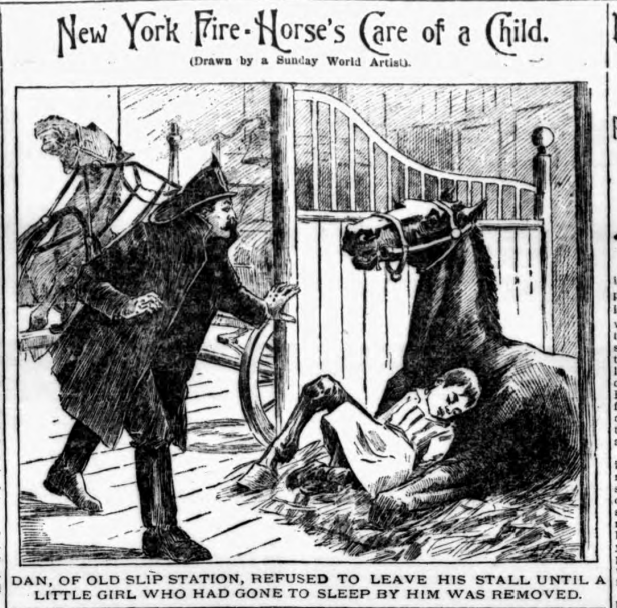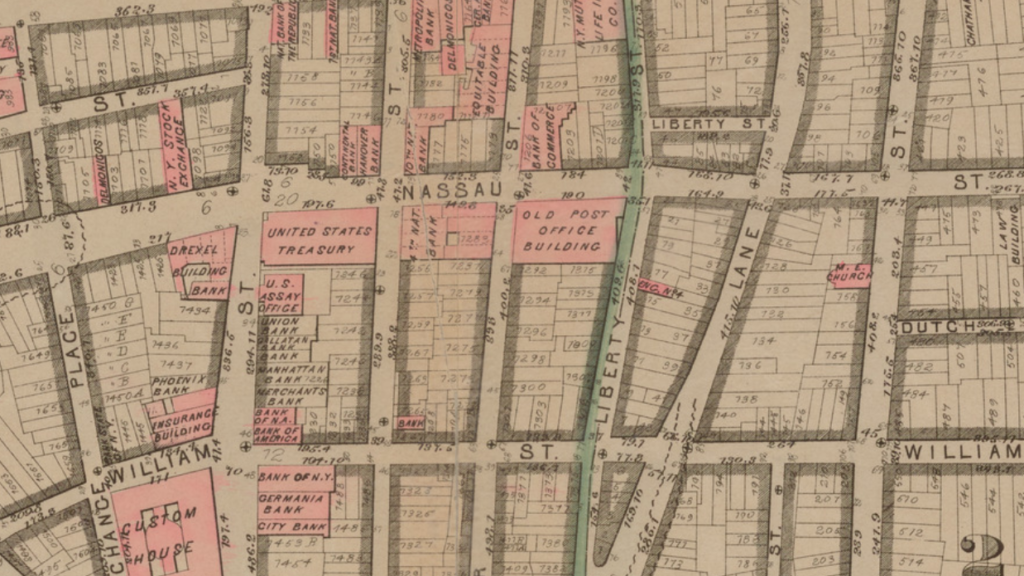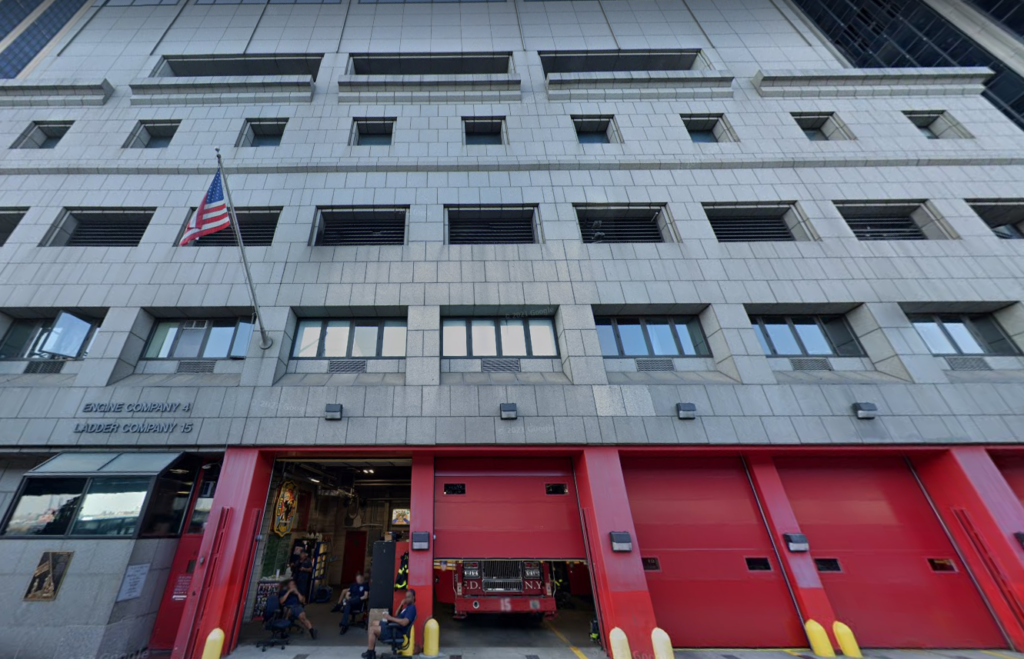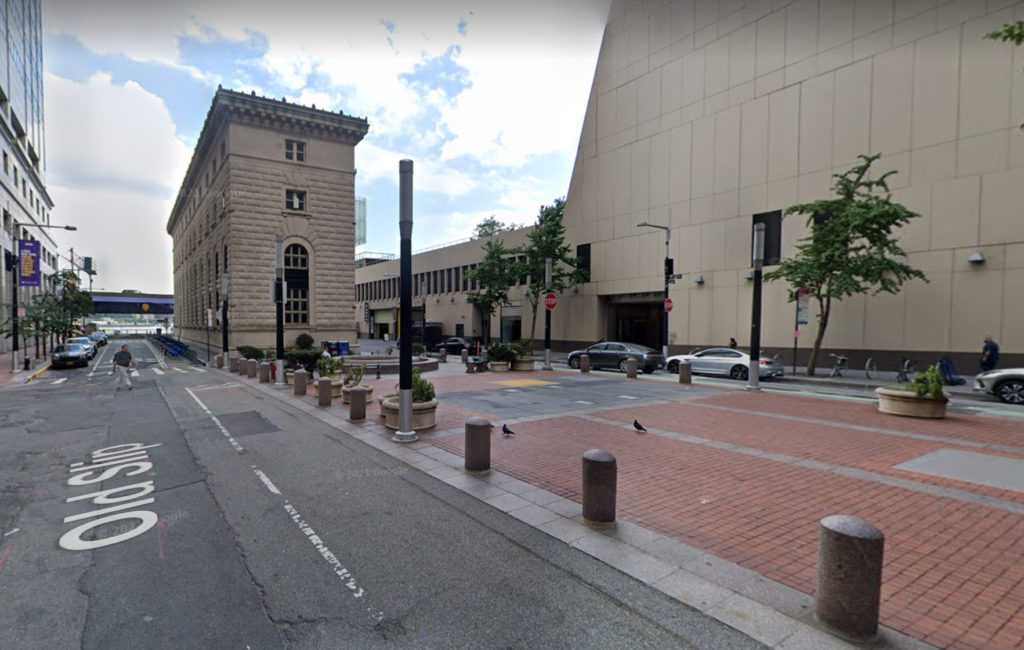
When Martin Cook received his promotion to captain of Engine 4 in 1886, the company received two horses, Dan and Dick. At this time, Engine 4 was a few blocks north of Old Slip, in a narrow, four-story brick firehouse at 39 Liberty Street (now the site of the Federal Reserve Bank), diagonally across from the Old Post Office building on Nassau Street. This was the heart of the city’s financial district, and the little firehouse was dwarfed by large brick and stone buildings housing the United States Treasury, Custom House, New York Stock Exchange, and dozens of banks and insurance firms.

Their house may have been small, but Dan and Dick were up for the challenge of protecting these world-famous institutions. Even as the two horses aged, they did the city and the FDNY proud. Captain Cook often received offers to trade in his team for younger animals, but he always turned them down. According to the FDNY veteran, there was not a more reliable, more careful, or faster team of fire horses in America.
Just to the east of Dick and Dan’s firehouse was a five-story brick building at 37 Liberty Street. When workmen demolished the walls of No. 37 in May 1893, it became evident that the eastern wall of the engine house could not stand on its own without the support of the larger building.
The contractor told Captain Cook that he would not be responsible for the safety of the men and their horses should they get called to a fire. The vibration created by the engine, tender, and horses could easily take the walls down. Rather than take any chances, the captain ordered the engine house cleared of everything on the first floor. This task required precision and slow work.
First, the men carefully lead the horse whose stall was closest to the threatening wall (either Dan or Dick) to the pole, where he was joined by his mate. The men snapped on the collars and lines, and gently and slowly drove the engine to the street.

After removing all the hose, they took the same steps with the fuel tender. The men threw blankets over Dan and Dick and then lit a fire under the engine boiler to keep up the requisite steam pressure. Then the men and their horses camped out for the night.
On May 19, 1893, the city condemned the old firehouse and Engine 4 relocated to the firehouse of Ladder 15 at 73 Water Street, where they stayed for the next seventeen years.
By 1897, Dan was about eighteen years old and had more than fourteen years of service in the department. In all those years, he was never ill, and he never missed a fire or false alarm below Houston Street. According to Captain Martin, who had more than twenty-years of service, Dan had ran with the engine or tender to 3,600 calls.

Dan was also a gentleman horse, always “shaking hands” with visitors and displaying “wonderful masculine instinct in his preference for fair womankind when he is asked for a kiss.” (He always kissed the ladies “with evident relish.”)
Dick was a bit younger, but he was also “exceedingly amiable in disposition.” The children loved visiting and playing with the good-natured horses, whose stables were just a few yards off the street. The children would timidly approach Dan and Dick and pat them on the nose, “shake hands” with Dan, or kiss them and scamper away.
One day a little girl who was bolder than the other children entered Dan’s stall and settled down on the soft bedding. Within minutes, she had fallen “into a peaceful slumber.” At this moment, an alarm sounded on the fire gong, sending every man scurrying to his place.
Dick dashed to his engine, but Dan didn’t budge. The men looked on in wonder as Dan peered anxiously out of his stall, this being the first time in fourteen years that he had failed to respond to a call. One of the men looked into the stall and discovered the cause of the delay.
Dan had figured out that if he had moved, he would have crushed the little girl. The fireman picked up the sleeping child and the noble Dan dashed to his place, “seemingly pleased with his heroism.”
In 1900, Engine Company 4 moved into a new, three-story brick and stone firehouse at 119 Maiden Lane. Incidentally, in September 1885, the company responded to a fire that demolished the previous building at at this address, then occupied by A. Montejo, a dealer in loaf tobacco, and by Bullard & Wheeler, dealers in bagging and ties. Engine Company 4 Foreman Thomas Conlin died in this fire, as did a civilian named John Donnelly
Today, Engine 4 and Ladder 15 are still at Old Slip, albeit in a 36-story skyscraper at 32 Old Slip (alt 42 South Street), which was completed in 1897. The building looms over Old Slip Park, where Dan and Dick spent many years in the old firehouse at 73 Water Street.





